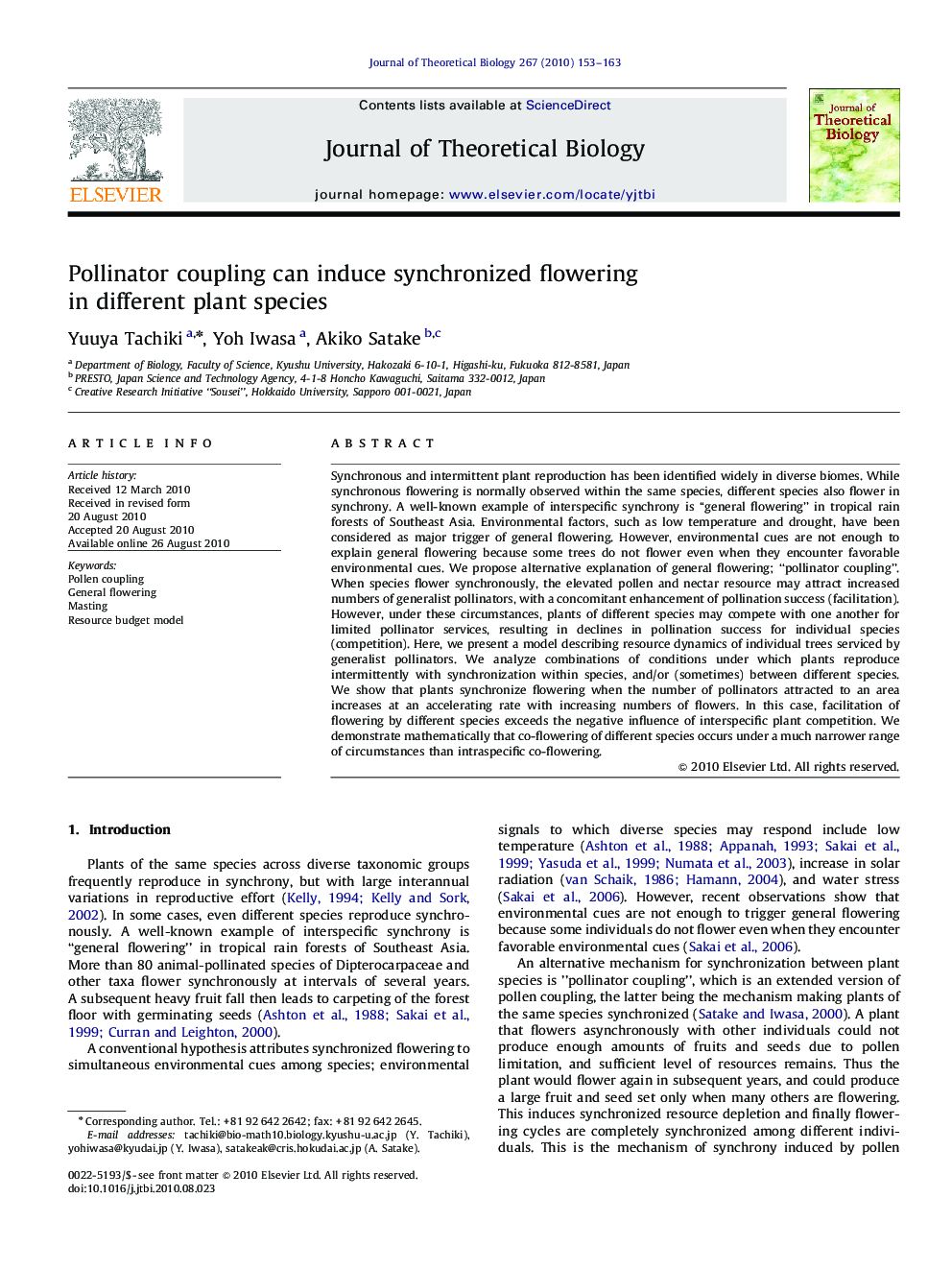| Article ID | Journal | Published Year | Pages | File Type |
|---|---|---|---|---|
| 4497397 | Journal of Theoretical Biology | 2010 | 11 Pages |
Synchronous and intermittent plant reproduction has been identified widely in diverse biomes. While synchronous flowering is normally observed within the same species, different species also flower in synchrony. A well-known example of interspecific synchrony is “general flowering" in tropical rain forests of Southeast Asia. Environmental factors, such as low temperature and drought, have been considered as major trigger of general flowering. However, environmental cues are not enough to explain general flowering because some trees do not flower even when they encounter favorable environmental cues. We propose alternative explanation of general flowering; “pollinator coupling”. When species flower synchronously, the elevated pollen and nectar resource may attract increased numbers of generalist pollinators, with a concomitant enhancement of pollination success (facilitation). However, under these circumstances, plants of different species may compete with one another for limited pollinator services, resulting in declines in pollination success for individual species (competition). Here, we present a model describing resource dynamics of individual trees serviced by generalist pollinators. We analyze combinations of conditions under which plants reproduce intermittently with synchronization within species, and/or (sometimes) between different species. We show that plants synchronize flowering when the number of pollinators attracted to an area increases at an accelerating rate with increasing numbers of flowers. In this case, facilitation of flowering by different species exceeds the negative influence of interspecific plant competition. We demonstrate mathematically that co-flowering of different species occurs under a much narrower range of circumstances than intraspecific co-flowering.
